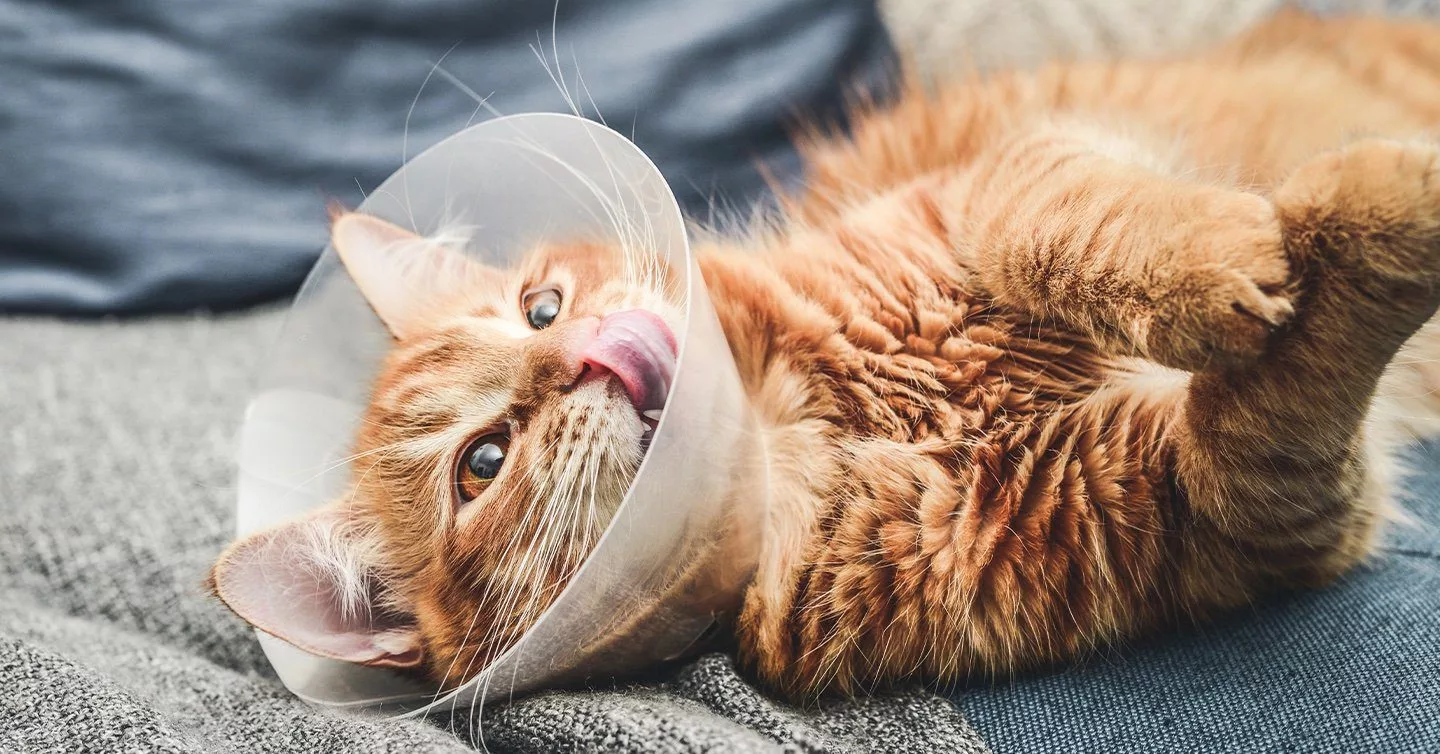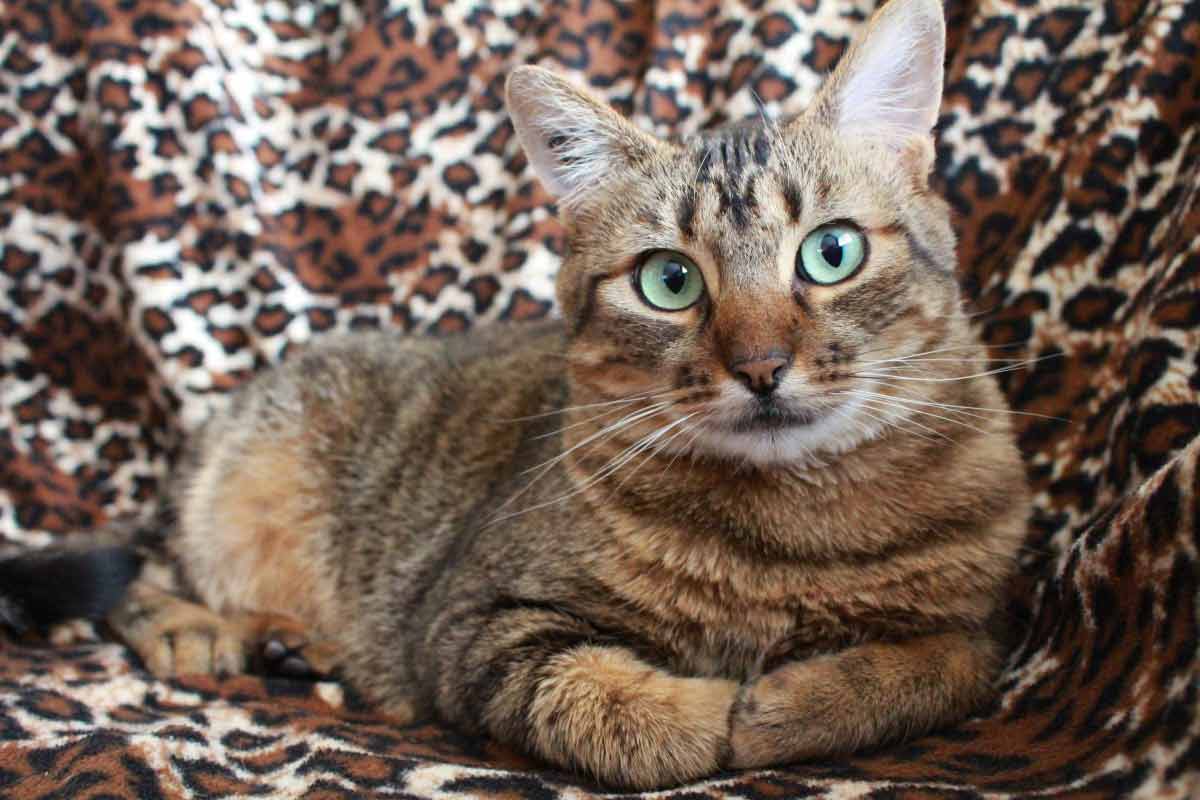How to care for your cat after spaying or neutering? While the postoperative phase is typically characterized by a smooth convalescence, a keen awareness of potential complications is paramount. Attentively monitoring subtle signs of lethargy, observing changes in the surgical area such as redness or irritation, and noting any unusual swelling or lumpiness are essential elements in safeguarding a patient’s recovery journey. By remaining vigilant and proactive, healthcare providers and patients alike can collaborate to swiftly address and mitigate any complications that may arise, ensuring a comprehensive and optimal postoperative outcome.
In the quiet hush of a post-surgery recovery room, the soft purr of my feline companion echoed, marking the beginning of a poignant journey toward healing. As I observed my cat, recovering from the recent spaying surgery, a resilient spirit emerged, teaching me the significance of meticulous aftercare in ensuring the well-being of our beloved pets. This narrative serves as an anecdotal overture, illuminating the pivotal role proper post-neutering/spaying care plays in a cat’s recovery.
How to Care for Your Cat After Spaying or Neutering: Immediate Post-Operative Care
Upon retrieving your feline companion from the Gordon Vet Hospital, it is imperative to be cognizant of her post-surgical state. Following the abdominal incision made for the spaying procedure, your cat may exhibit signs of drowsiness. This lethargy is a common aftermath of both anesthesia and surgery. Over the ensuing 24 hours, you can anticipate a gradual diminution of this drowsiness. Be attuned to the likelihood of bruising, akin to the postoperative experience of humans.
For this initial period, exercise prudence by providing your cat with a serene, warm environment. Ensure her intake of sustenance is moderated, delivering only petite portions of food and water. Adherence to the prescribed medication, outlined on the label, is crucial during this phase. Your vigilant care in these immediate hours will significantly contribute to the smooth progression of her recovery.
Vigilant Care: The Initial 24 Hours
In the immediate aftermath of the spaying procedure, your feline friend may manifest a degree of somnolence, a normal consequence of the administered anesthesia and the surgical intervention. Expect this drowsiness to gradually abate over the subsequent day. In a manner akin to human surgery, some bruising may be discernible, underscoring the importance of a gentle convalescent environment.
Create a tranquil haven for your cat, shielding her from external disturbances. Limit her nourishment and hydration to modest quantities for the first 24 hours. The judicious administration of medication, precisely per the instructions on the label, is paramount. Your conscientious oversight during this critical juncture will foster a conducive recovery environment for your cherished pet.
Extended Recovery Period
While many cats regain their vitality within a few days, a potential caveat looms on the horizon: the resurgence of your cat’s playful and energetic demeanor. Regrettably, this exuberance can pose a challenge to the convalescence process. Endeavor to mitigate her exuberance by encouraging a serene ambiance for at least seven days post-surgery.
Despite your feline friend’s resurgent vitality, exercise restraint to prevent her from engaging in excessive jumping and running. The healing process necessitates a gradual return to normalcy. Be cognizant that the sutures employed in the surgery will warrant removal within a timeframe of 10 to 14 days. This extended recovery period requires your ongoing vigilance and adherence to the stipulated guidelines.
Suture Removal and Gradual Normalization
As the days unfold, most cats exhibit a complete recovery, reaffirming the efficacy of the spaying procedure. However, this restoration of health is accompanied by a potential conundrum – the rekindling of your cat’s instinct to frolic and explore. During this delicate phase, exercise prudence by curbing her enthusiasm for a full seven days post-surgery.
Anticipate the eventual removal of sutures, a critical milestone in the recovery journey. This delicate task is typically scheduled between the 10th and 14th day post-surgery. Ensure a seamless transition to normalcy by adhering to the post-operative guidelines. The collaborative efforts between your watchful eye and veterinary guidance will usher your cat through a successful recovery, ensuring her long-term well-being.
The Elizabethan Collar (Cone): A Quirky Necessity
The enigmatic Elizabethan Collar, colloquially known as the “cone of shame,” may appear peculiar, but its purpose is far from whimsical. Demystifying this quirky accessory involves addressing common concerns, such as discomfort and irritation. Tips for ensuring the cat’s comfort while donning this peculiar collar become invaluable. Strategies like gradual introduction and distraction techniques can transform what might seem like an awkward impediment into a tolerable, if not amusing, aspect of the post-surgery experience. Understanding the psychology behind the cone helps navigate this seemingly strange phase with both finesse and compassion.
Incision Site Care: A Delicate Balance
Navigating the landscape of incision site care requires a delicate touch. It involves not only vigilant monitoring for signs of infection but also the application of gentle cleaning techniques. However, a caveat echoes through this realm: always consult your vet before embarking on any cleaning regimen. The incision site, a delicate nexus of healing tissues, demands a balance between meticulous care and professional guidance. The dance of diligence and caution intertwines here, forming the backbone of a hygienic and complication-free recovery journey.
Pain Management: The Symphony of Comfort
Prescribed medication isn’t merely a formality; it’s the conductor orchestrating the symphony of your cat’s comfort during recovery. Proper usage becomes an art, with adherence to the prescribed regimen crucial. Monitoring your feline friend’s pain level involves deciphering subtle cues, and creating an intricate dialogue between caregiver and patient. Pain, an intangible yet powerful force, must be respectfully acknowledged and alleviated, transforming the post-surgery landscape into a haven of comfort and tranquility.
Mobility Matters: The Art of Restriction
Restricting mobility during the initial healing phase is akin to crafting a delicate masterpiece. The canvas is your cat’s recovery, and the brush strokes involve understanding the delicate equilibrium between rest and gentle movement. The importance of imparting this understanding lies in fostering an environment that optimally supports the healing process. As recovery progresses, gentle exercise options become the evolving notes in this symphony, guiding your feline companion toward the crescendo of regained vitality.
Dietary Concerns: A Gastronomic Transition
Post-surgery, your cat’s culinary journey undergoes a metamorphosis. Changes in food intake necessitate a nuanced approach to feeding schedules. This gastronomic transition is more than a mere change in diet; it’s a tailored culinary experience designed to support the unique nutritional needs of the recovery period. Understanding these dietary concerns transforms the act of feeding into a therapeutic ritual, contributing to the overall wellness tapestry being woven during this phase.
Litter Box Blues: The Terrain of Habits
The litter box, once a mundane aspect of your cat’s routine, becomes a terrain of potential adjustments post-surgery. Addressing potential changes in litter box habits requires finesse and understanding. Tips for maintaining hygiene and encouraging usage turn this seemingly trivial concern into a pivotal aspect of the post-surgery narrative. The litter box blues, while temporary, demand a compassionate approach, ensuring that your cat’s recovery journey remains dignified and unmarred by inconveniences.
Probable Problems Need to Monitor
Potential Postoperative Complications
After undergoing a surgical procedure, patients commonly experience a smooth recovery process; nevertheless, it is imperative to remain vigilant for any potential complications that may arise. A range of indicators could signal the onset of issues demanding prompt attention and care. Monitoring one’s postoperative state becomes paramount, and recognizing the subtle nuances that might escape casual observation is key to ensuring a complication-free recovery.
Subtle Signs of Postoperative Distress
In the aftermath of a surgical intervention, a patient’s demeanor can serve as a nuanced barometer of their well-being. One such subtlety to be mindful of is a lingering sense of lethargy and listlessness, particularly if these sensations persist beyond the initial 24-hour postoperative period. The subtle undercurrents of fatigue may manifest in a manner that requires astute observation, demanding a discerning eye to catch these subtle shifts in vitality.
Observing Changes in the Surgical Area
The surgical site itself can provide valuable insights into the progression of the recovery process. A vigilant eye should be cast upon any alterations in the area around the incision. Should the region appear reddened or show signs of irritation, it may be an early indication of an underlying problem. The visual cues of redness and irritation act as the body’s silent messengers, prompting a closer inspection and potentially revealing an impending issue that warrants medical attention.
Unusual Swelling and Lumpiness
As the body initiates the healing process, observable changes in the form of swelling or lumpiness may become apparent around the surgical site. This morphological shift, while often a natural part of the healing trajectory, can occasionally escalate into an unforeseen complication. The discerning eye should note any abnormal degrees of swelling or the presence of unexpected lumps, as these deviations from the anticipated healing pattern may signify an underlying concern requiring timely medical evaluation.
Delicate Aftermath: A Nuanced Approach to Feline Surgery Recovery
In the intricate tapestry of feline health, the aftermath of surgery unveils a delicate dance between care and caution, transcending the boundaries of the sterile operating room. Beyond the scalpel’s precision lies a realm of responsibility that extends into the core of pet ownership, where the onus is not only on physical convalescence but also on safeguarding the emotional equilibrium of our beloved feline companions. This thesis contends that responsible aftercare is the linchpin, weaving a narrative that intricately addresses the multi-dimensional facets of nurturing a cat through the post-neutering or spaying journey.
Unraveling Layers: The Imperative Aspect of Pet Ownership
As we embark on this comprehensive exploration, the quest is to unravel the layers of responsibility woven into the fabric of pet ownership during the vulnerable post-surgical period. Our journey extends far beyond the superficial, urging us to probe the intricacies of cat care in the aftermath of a surgical procedure. It becomes imperative to not only trace the visible threads of physical recuperation but also to navigate the labyrinth of emotions that define our feline friends. This article serves as a beacon, guiding pet owners through the labyrinth of postoperative care, and shedding light on the nuanced dimensions that demand attention.
A Holistic Recovery Blueprint: Secrets to Seamless Recuperation
Within the intricate mosaic of post-surgery cat care, a nuanced blueprint emerges, guiding caregivers through the uncharted territory of a feline’s convalescence. Vigilant monitoring of the surgical incision becomes the initial brushstroke, painting the canvas of recovery with meticulous attention. Yet, our exploration doesn’t end there; it delves into the emotional palette, emphasizing the indispensable role of offering solace and understanding. This comprehensive guide unfolds the secrets to a seamless recuperation, exploring not only the physical aspects but also the psychological nuances that underpin the postoperative journey for your cherished pet.
Dietary Considerations, Activity Adjustments, and Psychological Well-being
Venturing into the subsequent sections, our focus sharpens on the pivotal elements that shape the trajectory of feline recovery. The canvas expands to include dietary considerations, where the brush of nutritional choices strokes the path to healing. Physical activity adjustments, often an overlooked stroke in the recovery canvas, come to the forefront, requiring careful calibration to ensure the right balance between rest and rehabilitation. Amidst the tangible aspects, the ethereal realm of psychological well-being emerges as a central theme, demanding acknowledgment and understanding. This article, therefore, seeks to provide a compass for pet owners, navigating through the intricacies of cat care, offering guidance on the multifaceted dimensions that constitute a holistic approach to post-surgery recovery.

Demystifying the Procedure
Delving into the intricacies of feline healthcare, it is paramount to distinguish between neutering and spaying, dispelling common misconceptions that often shroud these procedures in mystery. Neutering typically applied to male cats, involves the removal of the testicles, mitigating reproductive capabilities. On the other hand, spaying pertains to females, encompassing the removal of the ovaries and sometimes the uterus, ensuring an end to the potential of bearing offspring. These procedures not only control the feline population but also carry distinct implications for the health and behavior of our feline companions.
Discerning Long-Term Health Benefits
Contrary to prevalent uncertainties, both neutering and spaying confer a multitude of enduring health advantages upon our cherished feline friends. For male cats, neutering diminishes the likelihood of testicular cancer and curtails the inclination for territorial marking and aggressive behavior. Similarly, female cats benefit from spaying, experiencing a reduced risk of uterine infections and mammary tumors. Moreover, these surgical interventions contribute significantly to elongating the life expectancy of our feline companions, ensuring a healthier and more vibrant existence.
Navigating the Pre-Surgery Landscape
As the pivotal day of surgery approaches, meticulous preparation becomes imperative to ensure a seamless experience for both the cat and its caretaker. Fasting, a fundamental prelude to the surgical process, involves withholding food for a specified duration, typically overnight, to mitigate the risk of complications during anesthesia. Beyond dietary considerations, transportation logistics merit careful attention, warranting a secure and comfortable carrier for the feline traveler. Equally crucial is the management of pre-operative nerves, as cats may exhibit anxiety or stress. Implementing strategies such as gentle play and comforting environments can assuage their apprehensions, fostering a more positive experience on the surgery day.
Beyond the Physical: Nurturing Your Cat’s Emotional Recovery
Understanding Emotional Changes
Delving into the intricate world of feline emotions post-surgery unveils a spectrum of complexities. Cats, known for their stoic demeanor, can experience a kaleidoscope of feelings, ranging from anxiety to profound confusion and even bouts of feline melancholy. The surgical procedure, while mending the physical ailment, can cast a shadow on their emotional equilibrium. This emotional turmoil requires a nuanced understanding, acknowledging the subtleties of a cat’s psyche.
Creating a Safe Haven
Crafting a cocoon of tranquility becomes paramount in aiding your feline friend’s emotional convalescence. Picture a haven adorned with familiar bedding, an oasis of comfort where the scent of home wraps around your cat like a protective cloak. Minimizing disruptions becomes an art form—soft, ambient lighting, hushed tones, and a sanctuary of serenity. It’s in these carefully curated spaces that emotional healing begins, with the surroundings acting as a balm to their post-surgical anxieties.
Bonding Through Comfort
In the tapestry of feline emotions, the threads of connection weave a crucial narrative. Gentle handling emerges as a cornerstone, a bridge between the language of touch and emotional reassurance. Imagine a symphony of soothing words and tender caresses, a healing melody that resonates through the corridors of your cat’s consciousness. The emphasis on tender loving care (TLC) during recovery not only fosters physical healing but becomes the linchpin in restoring emotional equilibrium.
Playful Distractions
Enter the realm of therapeutic diversions, where age-appropriate, non-strenuous play sessions morph into avenues of mental stimulation. Envision a delicate dance of feathers or a captivating puzzle that engages the feline intellect without taxing the healing body. These playful distractions not only serve as a mental elixir but also metamorphose into positive channels for your cat to channel their energy, fostering an environment where joy becomes a catalyst for emotional recovery.
Managing Environmental Stressors
Navigating the labyrinth of potential stressors demands a vigilant eye and strategic intervention. Picture a scenario where the clangor of loud noises, the intrusion of new pets, or the ripples of unfamiliar changes in routine become potential emotional landmines for your recovering feline companion. Identifying and minimizing these stress triggers become the guardians of emotional stability, ensuring a convalescence shielded from unnecessary emotional turbulence. How AI, ChatGPT maximizes earnings of many people in minutes
Seeking Help for Behavioral Changes
In the unfolding narrative of feline convalescence, an urgent call to action resonates. Should the echoes of persistent anxiety, the shadows of depression, or the sparks of aggression persist, the reader is implored to embark on a collaborative journey with their feline confidant’s healthcare custodian—the veterinarian. A professional ally in deciphering the cryptic language of feline behavior, the veterinarian becomes the guide, illuminating the path toward a holistic recovery that transcends the physical realm, delving deep into the intricate tapestry of feline emotions.
Purrfectly Timed Tips: Week-by-Week Recovery Guide
Week 1: Rest and Relaxation
In the initial seven days following your feline companion’s surgery, a careful approach to rest becomes paramount. Create a serene and comfortable environment, minimizing disturbances that could disrupt your cat’s recovery. Feather-light touches and soothing words can reassure them in this delicate phase. Keep a vigilant eye on any signs of discomfort or unusual behavior, while adhering strictly to prescribed medications and dietary guidelines. This period sets the foundation for a smooth recuperation. Motivation – Mind – Success – Thinking – Productivity – Happiness
Week 2: Gradual Progress
As your cat enters its second week of recovery, a delicate balance between rest and gradual progress emerges. Encourage short, supervised periods of gentle activity, gauging your cat’s response to avoid overexertion. Pay meticulous attention to the healing process at the surgical site, ensuring there are no signs of infection or inflammation. Slowly reintroduce normalcy while adhering to the veterinarian’s recommendations, fostering a measured and steady progression toward optimum health.
Week 3: Back to Basics
With the third week, the focus shifts towards reintegrating your cat into familiar routines and behaviors. Monitor their play and social interactions closely, noting any deviations from their typical demeanor. Vigilance is key, as even subtle changes could indicate potential complications. Gradually expand the playtime, allowing your feline friend to rediscover the joys of their favorite activities. This stage marks a crucial turning point, striking a balance between normalcy and caution.
Week 4: Stitches Say Goodbye
The fourth week heralds the departure of the stitches, symbolizing the final stages of the recovery process. A detailed explanation of the suture removal procedure prepares you for what lies ahead. Emphasize the importance of the follow-up visit to the veterinarian, underscoring the significance of a professional assessment. This momentous step signifies the completion of the immediate post-surgery phase, paving the way for a more liberated and comfortable existence for your cherished pet. Business – Money Making – Marketing – E-commerce
Beyond Week 4: Long-Term Health and Happiness
As the initial month concludes, a shift towards long-term well-being takes precedence. Delve into comprehensive guidance on sustained cat care practices post-neutering/spaying. Explore dietary considerations, exercise regimens, and mental stimulation strategies to ensure your cat’s ongoing health and happiness. This segment serves as a compass, guiding you beyond the immediate recovery period, and fostering a robust foundation for your feline companion’s enduring vitality.
Essential Aspects of Post-Neutering/Spaying Care
Embarking on the journey of post-neutering or spaying care for your cherished feline companion is a pivotal chapter in their life. To encapsulate the key takeaways, it’s imperative to comprehend the multifaceted aspects that contribute to their well-being during this recovery period.
First and foremost, meticulous attention to the surgical site is paramount. Ensure that the incision area is kept clean and dry to prevent infections. Adhering to the veterinarian’s instructions regarding wound care is not merely a suggestion but a crucial component in safeguarding your cat’s health post-surgery. Health books, guides, exercises, habits, Diets, and more
Monitoring their behavior is equally vital. Cats, renowned for their stoic nature, may conceal signs of discomfort. Vigilance becomes the watchword; observe changes in appetite, activity levels, or any abnormal behavior. Early detection of potential complications facilitates prompt intervention, enhancing the prospects of a seamless recovery.
Nutritional considerations also demand meticulous attention. Adjusting your feline friend’s diet by post-operative guidelines is pivotal. Optimal nutrition accelerates the healing process, fortifying their immune system and ensuring they regain their vitality swiftly.
Reassurance and Encouragement: Cherishing the Positive Outcomes
In the realm of post-neutering or spaying care, it’s not merely about protocols and procedures; it’s a celebration of responsible pet ownership. As you navigate through this phase, it’s paramount to recognize and emphasize the positive outcomes that await both you and your feline companion.
Reassurance stems from the fact that by opting for neutering or spaying, you are actively contributing to the overall welfare of your cat. The procedure not only curtails unwanted behaviors but also minimizes the risk of certain health issues, promoting a longer and healthier life. Remind yourself that the brief discomfort your cat may experience is a small price to pay for their well-being in the grander scheme. Fitness – Meditation – Diet – Weight Loss – Healthy Living – Yoga
Embrace the joyous prospect of a harmonious home environment. Unburdened by hormonal fluctuations, your cat is likely to exhibit a more amiable demeanor. The post-surgery period marks the beginning of a tranquil coexistence, fostering a deeper bond between you and your feline friend.
Personalizing the Recovery Space: Enhancing Cat Comfort Post-Surgery
Creating a personalized and nurturing recovery space for your feline friend is paramount in ensuring a smooth and stress-free recuperation. Begin by selecting a quiet and secluded area, away from bustling household activities, providing a serene environment. Introduce soft bedding, strategically placed in a warm spot with gentle lighting to promote relaxation. Consider incorporating familiar scents, such as your cat’s favorite blanket or toy, to create an atmosphere of familiarity, aiding in the recovery process. Additionally, installing vertical spaces, like shelves or perches, allows your cat to observe their surroundings comfortably, fostering a sense of security. Cat accessories on Amazon
Feline Entertainment Guide: Tailored Amusements for Post-Surgery Bliss
A crucial aspect of a cat’s recovery involves engaging them in activities that stimulate both their physical and mental well-being. Opt for toys that encourage gentle movement, avoiding strenuous activities during the initial stages of recuperation. Puzzle feeders filled with treats provide mental stimulation, diverting your cat’s attention from any discomfort. Consider interactive games, such as feather wands or laser pointers, to keep them engaged without overexertion. Activity centers with scratching posts also serve the dual purpose of entertainment and maintaining claw health.
Diet Delights: Culinary Solutions for Post-Operative Nourishment
Crafting a post-surgery diet that is not only nutritious but also enticing is crucial to ensure your cat receives the necessary nourishment for a swift recovery. Consult with your veterinarian to determine dietary requirements, considering factors such as age, weight, and any specific health concerns. Explore homemade recipes incorporating easily digestible proteins and essential nutrients. Broths infused with shredded chicken or turkey offer hydration and encourage appetite. Introduce small, frequent meals to prevent any digestive strain, and experiment with textures and flavors to entice your cat’s discerning palate. See why thousands of cats love BoxCat
Recovery Rituals: Establishing Calming Routines for Emotional Well-Being
Creating a sense of routine during the recovery period can significantly contribute to your cat’s emotional well-being. Establish consistent feeding times, incorporating gentle grooming sessions to promote bonding and relaxation. Utilize pheromone diffusers or calming sprays in the recovery space to create a serene ambiance. Soft background music or soothing sounds can further aid in reducing stress. Gradually reintroduce pre-surgery activities, ensuring a gradual transition back to their routine. Patience and a calm demeanor from the caretaker play pivotal roles in reassuring your cat during this sensitive period.
Takeaways: Post-Surgery Journey with Patience and Love
As you stand at the threshold of the post-surgery journey, armed with knowledge and commitment, the final message resonates with the essence of patience, love, and unwavering dedication to your feline companion’s well-being.
Patience is the linchpin in this odyssey. Understand that recovery is a gradual process, and each cat progresses at its own pace. Provide a nurturing environment, infused with love and understanding, allowing your furry friend to convalesce at their rhythm. RPM 3.0 – 60% CONVERSION & Money for Affiliate Marketing
In this juncture, knowledge becomes your staunch ally. Equip yourself with a profound understanding of the do’s and don’ts, forging a path toward a smooth recovery. Consultation with your veterinarian becomes a beacon, offering guidance and insights tailored to your cat’s unique needs.
Embrace the post-surgery journey not as a challenge but as an opportunity to deepen your connection with your feline companion. Shower them with affection, maintain a serene ambiance, and revel in the knowledge that you are steering them towards a purrfect future. Remember, the journey may have its twists and turns, but with patience, love, and knowledge, a brighter horizon awaits your beloved cat.
Other Interesting Articles
- How To Take Care Of A Kitten: A Guide For New Pet Owners
- Why Do Cats Chirp? Major Reasons Behind This Cute Sound
- 10 Common Reasons Why Cats Suckle? How To Discourage
- 12 Reasons Why Cats Meow So Much: How To Mitigate
- 9 Common Reasons Why Cats Chirp or Chatter: 5 FAQs
- Cat Zoomies: Why Does A Cat Get Them? When to Call a Vet?
- Burmilla Cat Breed: Profile, Traits, Grooming, Health, Care
- Aegean Cat Breed: Profile, Traits, Grooming, Health, Care
- American Wirehair Cat Profile, Traits, Grooming, Health, Care
- American Shorthair Cat Profile, Traits, Grooming, Health, Care
- American Polydactyl Cat Profile, Traits, Grooming, Health, Care
- American Longhair: Profile, Traits, Grooming, Health, Care
- American Curl Cat Profile, Traits, Grooming, Health, Care
- Asian Semi-Longhair Cat Profile, Traits, Grooming, Health, Care
- California Spangled Cat: Profile, Traits, Grooming, Health, Care
- Burmilla Cat Breed: Profile, Traits, Grooming, Health, Care
- British Shorthair Cat: Profile, Traits, Grooming, Health, Care
- Brazilian Shorthair Cat: Profile, Traits, Grooming, Health, Care
- Bombay Cat Breed: Profile, Traits, Grooming, Health, Care
- British Longhair Cat: Profile, Traits, Grooming, Health, Care



